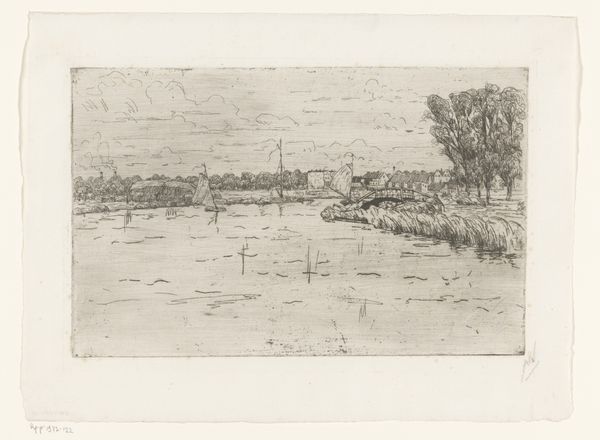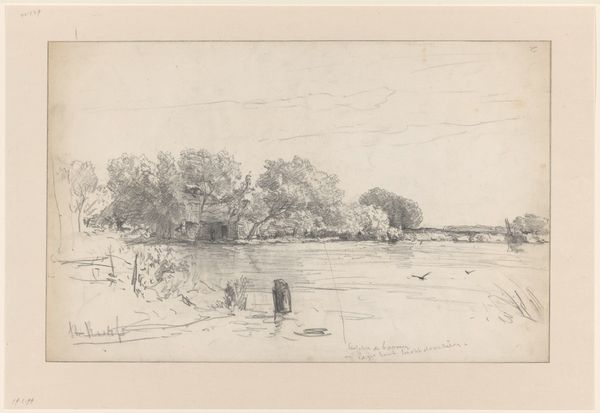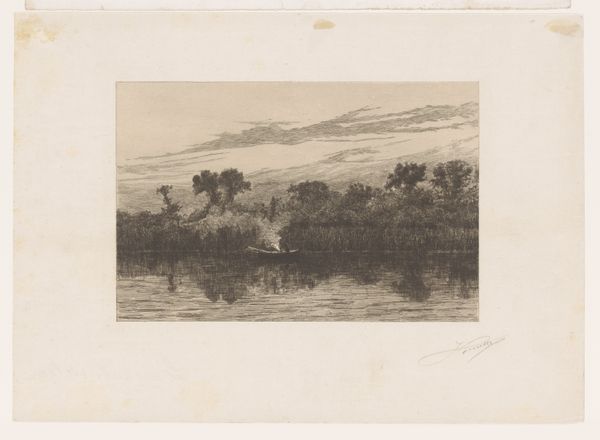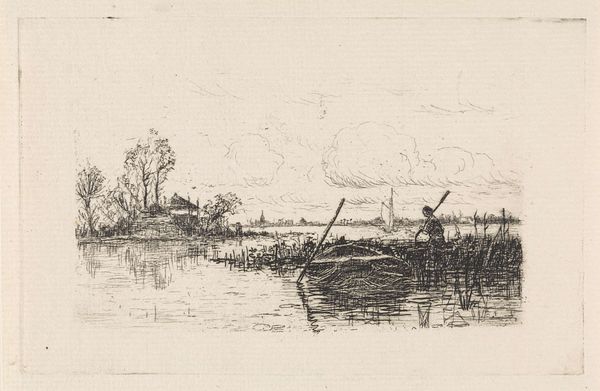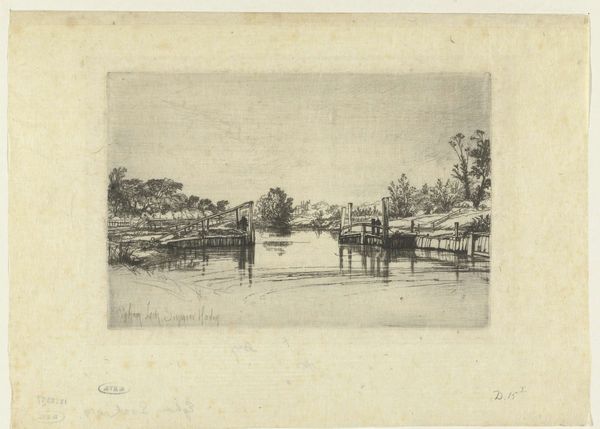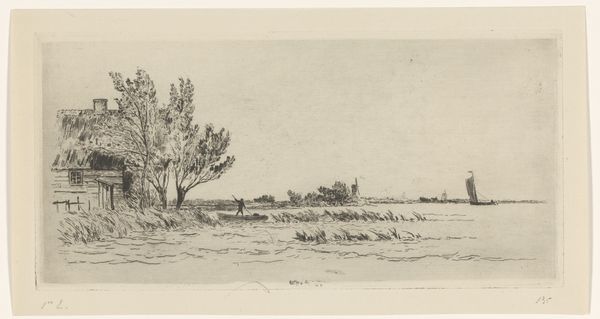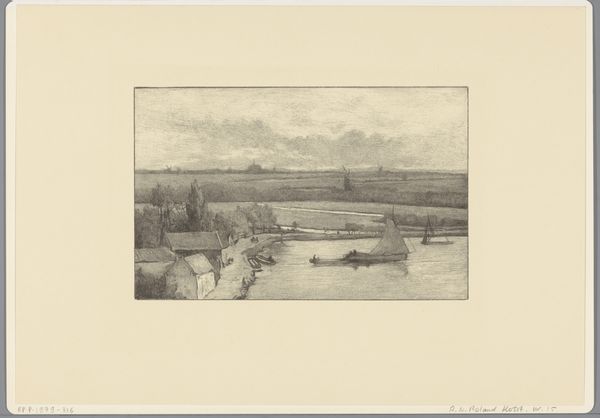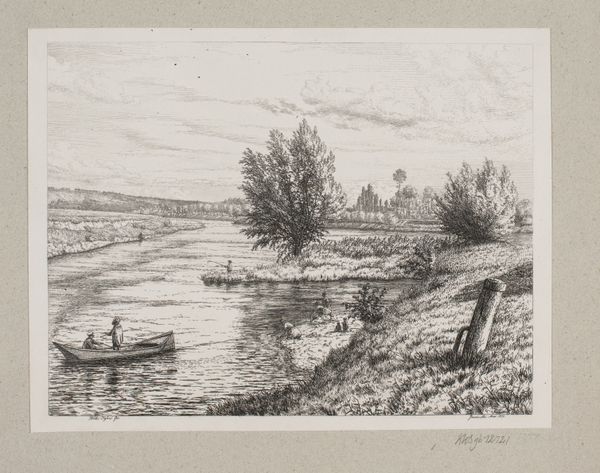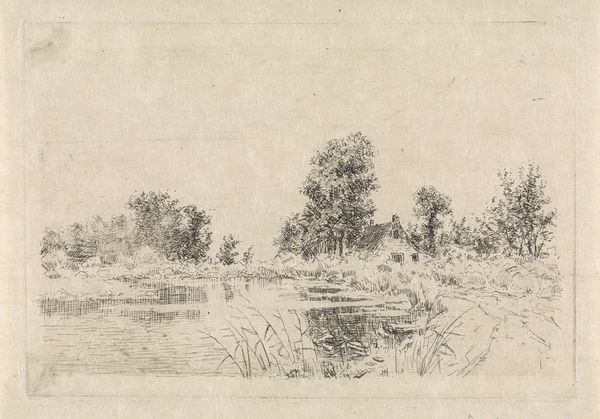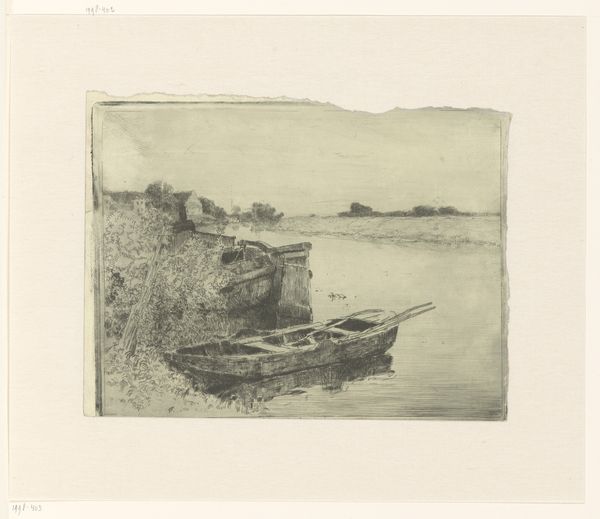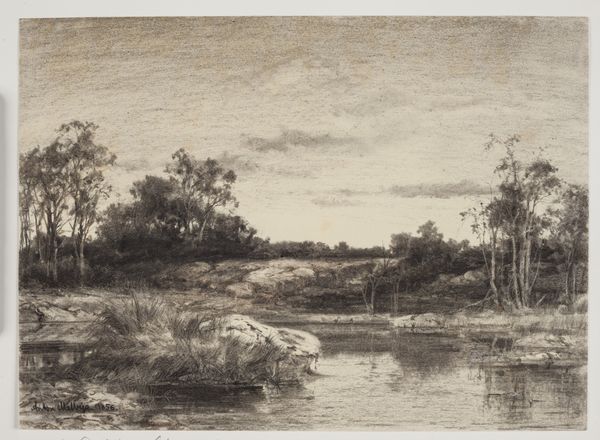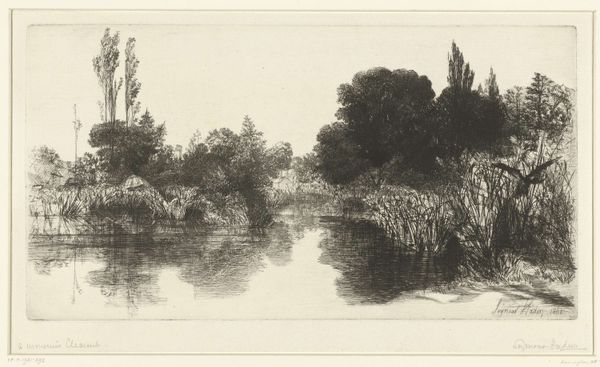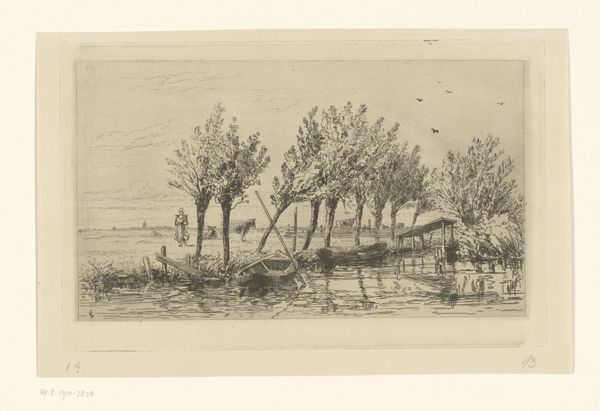
drawing, print, etching
#
drawing
# print
#
pen sketch
#
etching
#
pencil sketch
#
landscape
#
river
#
etching
#
pen-ink sketch
#
realism
#
monochrome
Dimensions: height 123 mm, width 182 mm
Copyright: Rijks Museum: Open Domain
Curator: This etching, titled "Rivierlandschap met beladen schuit," or "River Landscape with Loaded Boat," dates roughly between 1859 and 1933. The artist is Elias Stark, and the print itself is currently held in the collection of the Rijksmuseum. Editor: It has an ephemeral quality, doesn’t it? A fleeting moment captured in monochrome. The scene is so lightly rendered; it feels like a half-remembered dream of a river landscape. Curator: I'm intrigued by Stark’s choice of etching for this piece. Etching allowed for a level of detail that's almost sketch-like. Think about the labour involved; a copper plate carefully coated, the design etched with acid, then inked and pressed. It speaks volumes about the accessibility and democratisation of image-making during that period. It transformed art production, creating something reproducible but also incredibly delicate. Editor: And consider the boat at the center. For centuries, boats have signified journeys—both literal and metaphorical. They also stand as a symbol for cultural exchange and migration, a silent witness to centuries of shifting power. That little vessel is imbued with a remarkable amount of symbolic weight, isn't it? Curator: Indeed. I imagine this particular type of boat and the labor performed within would vary by region, with localized skills. Its design would also directly influence what types of goods and commodities could be moved, linking the landscape directly to material exchange. Editor: To me, the entire image evokes a sense of wistful tranquility. The etching captures a moment of peaceful labor. But is there something more? A meditation on time, perhaps, or the relationship between humanity and the natural world. I'm interested in the almost imperceptible presence of a village. What can that teach us? Curator: From a production standpoint, the availability of materials, like the quality of ink and paper would influence the final appearance and longevity. Stark's artistry becomes entwined with material limitations of that era, affecting the look and interpretation of the print. Editor: Thank you, that helps contextualize my understanding, drawing attention to the physical realities behind it and reminding me of our history and culture—made visually present. Curator: And to recognize the hands that produced, carried, and delivered these works for consumption as aesthetic objects, no longer available.
Comments
No comments
Be the first to comment and join the conversation on the ultimate creative platform.
